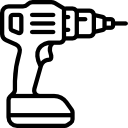- اتو لوله سبز
- اره پروفیل بر
- اره عمودبر (اره چکشی)
- اره فارسی بر
- اره گرد (اره دیسکی)
- اره مویی
- اره میزی
- اره نواری (گوشت بری)
- اره همه کاره (افقی بر)
- ابزار چندکاره
- بالابر برقی
- بتن ساب و موزایک ساب
- بکس برقی
- پیچگوشتی برقی
- پیستوله برقی
- بیسکویت زن
- چکش تخریب
- دمنده/مکنده (بلوور)
- دریل بتن کن
- دریل ساده (سرکج)
- دریل ستونی
- دریل ضربه ای/چکشی
- دریل مغناطیسی (مگنتی)
- دریل نمونه بردار (کرگیر)
- دستگاه جوش
- رنده و فرز نجاری
- سنباده برقی
- سشوار صنعتی
- سنگ دوطرفه (چرخ سنباده)
- سنگ و پولیش
- شیارزن و مرمربر
- فرز مینیاتوری
- فرز انگشتی
- میخکوب و منگنه کوب
- مینی سنگ
Understanding the Role of Ventilation in Maintaining Plumbing System Performance
Ensuring adequate air circulation is a fundamental aspect of any pipe network. Inadequate air movement can lead to common issues that affect both functionality and hygiene. For a deeper understanding of the significance of airflow in such frameworks, check out this resource.
One primary function of airflow is to facilitate the proper exit of gases and odors, significantly aiding in odor prevention. Blocked or improperly managed airflow can cause unpleasant smells and health hazards. Addressing these ventilation gaps helps maintain a pleasant and safe environment in our homes and workplaces.
How Ventilation Affects Drainage and Waste Management
Proper vent pipe installation plays a crucial role in ensuring effective drainage and waste management within any infrastructure. A well-designed vent system enhances drain flow by allowing air pressure to stabilize, thus preventing vacuum conditions that can hinder waste removal. This is particularly significant in multi-story buildings, where vertical stacks demand efficient air circulation to function optimally.
Maintenance practices are essential for preventing common issues associated with drainage. Regular inspections and cleaning of vent pipes help mitigate blockages that can lead to backups and unpleasant odors. Odor prevention measures are equally important; without appropriate venting, foul smells can permeate living spaces, resulting in discomfort for occupants. Compliance with code requirements is imperative, as local guidelines dictate specific configurations to ensure maximum efficiency and safety in waste disposal.
Experience live dealers at https://danielstednitzplumbing.com/ for real casino action.
Neglecting proper venting can lead to decreased system efficiency and increased maintenance costs. By understanding the connection between ventilation and drainage, property owners can implement solutions that enhance overall waste management and improve indoor air quality.
Identifying Common Ventilation Issues in Residential Plumbing
Recognizing typical challenges in air circulation is crucial for maintaining optimal functionality in home drainage setups. Common issues can arise from improper vent pipe installation, leading to blockages and diminished system performance. Homeowners should be vigilant about observing signs that indicate potential air flow problems.
One frequent complication involves insufficient venting, which can result in slow drainage and backups in fixtures. Inadequate air access prevents waste water from flowing smoothly, contributing to increased pressure and undesirable odors. Regular maintenance practices should focus on inspecting vent pipes to ensure they remain unobstructed and aligned with code requirements. By addressing these factors, homeowners can enhance system efficiency and bolster odor prevention efforts.
Another concern includes damaged or collapsed vent pipes that may affect overall function. It’s essential to conduct routine checks for any cracks or disconnects that can lead to serious repercussions. Implementing a proactive approach to monitoring these components not only aids in identifying problems early but also ensures a more reliable and effective operation.
Best Practices for Enhancing Ventilation in Plumbing Installations
Implementing best practices can significantly improve air circulation within drain systems, leading to optimal drain flow and overall functionality. Compliance with local code requirements ensures that installations meet safety and performance standards while facilitating effective odor prevention.
Vent pipe installation should be strategically planned to maximize airflow. Placing vent pipes at the correct heights and distances from fixtures enhances system efficiency. Regular maintenance practices, such as removing obstructions and inspecting vent lines, can prevent buildup that compromises airflow and increases the risk of backups.
In addition, using larger diameter piping for vents can improve airflow capacity, reducing pressure variances that contribute to malodors. Engaging the expertise from professionals, such as those found at https://danielstednitzplumbing.com/, can provide tailored solutions to further enhance air exchange and minimize potential issues in residential installations.




